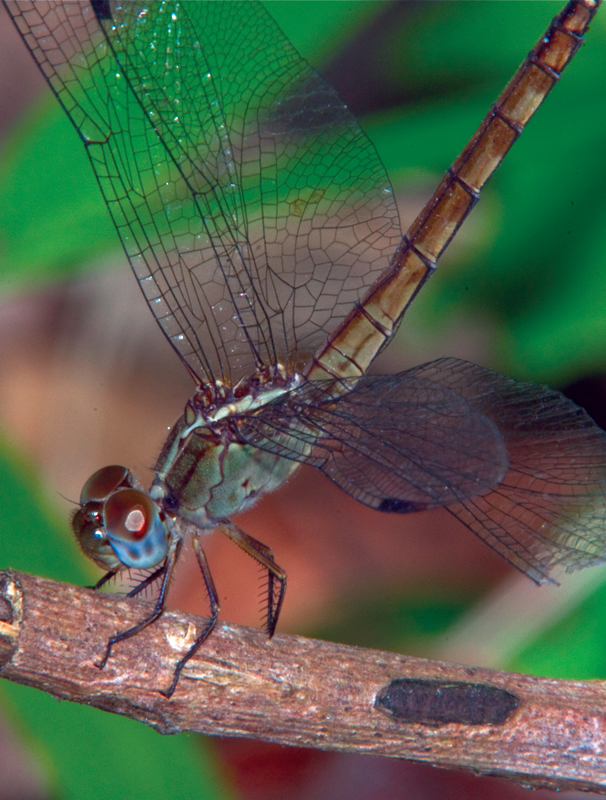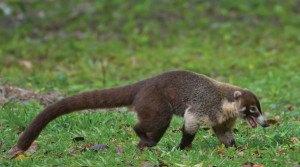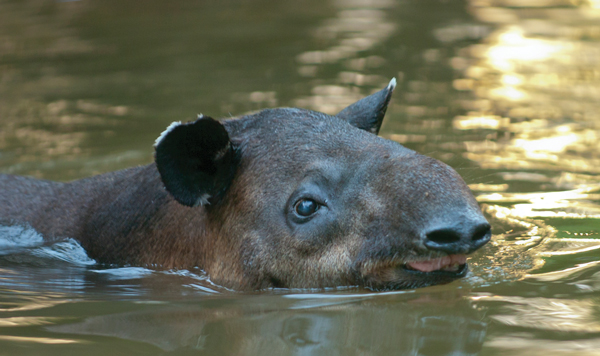The Dragons of Ixlu: Dragonfly Watching in Guatemala

“What most caught my eye were the abundance of multicolored and muti-sized dragonflies, swooping and dipping all over the area on hunting forays.” (photos: Thor Janson)
Dragonfly watchers are known to insiders as “Oding” enthusiasts. No other insect is as agile and quick as are these miniature helicopters. They can fly in six different directions. One scientist clocked a particular type of dragonfly flying at 90 kilometers per hour, making them the fastest of all insects! And just as is the case with bird watching, you can get your identification book and go out searching for new species to marvel at. It’s a great hobby.
Guatemala is high on the list of the planet’s adventure travel destinations, as the country boasts a unique diversity of geological and botanical zones from high cool alpine and cloud forests to sweltering lowland jungles and swamps.
Guidebooks list many exotic places where nature enthusiasts can satisfy their curiosity about the tropical world as well as the perpetual cycles of indigenous cultural events for those interested in the lifestyles of the Maya. In addition to the well-known places and events, Guatemala has multitudinous nooks and crannies where intrepid explorers can step off the beaten path and step into wonderland.
Following a tip, I decided to explore the forested area adjacent to the infrequently visited archaeological site of Ixlú, just off the highway halfway between Flores and Tikal, before you get to the turnoff for El Remate, by the shore of Lake Petén Itzá. I was interested in getting some photographs of an “anda solo.” The anda solo, or “loner,” is a variety of coatimundi, a medium-sized tropical mammal. The thing is, coatimundis, or at least all the ones that I had ever seen, always live in family gangs of a dozen or more individuals.
Nevertheless, on countless occasions I heard people living in the remote jungle telling me stories about two different kinds of coati-type animals: pisotes and anda solos, while scientific books refer to only one variety. A local resident told me that a big anda solo hung around the forest of Ixlú. My challenge was to try to find him and take his portrait.
After an entire day stalking around the forest searching for the “loner” I was just about to give up when I encountered three little barefoot Maya children who, finding something for their amusement, began following me from a distance. Finally, I bid them to approach and asked if they had ever seen an anda solo in the area. “Oh sure,” they answered smiling, “you can see him every evening down by the creek.”
So down by the creek we went and, sure enough, there he was. He was scratching the ground, looking for food and he did not seem too bothered by our approach. The interesting thing was not just that he was all alone but that he seemed larger and darker in color than any other coatimundi that I had ever seen. I took some snaps with my heavy artillery camera equipment and at dusk we made our way back to my land yacht, where I gladly dispensed cookies and pineapple juice to my new assistants, much to their delight!
The next day my young assistants were waiting for me when I returned to Ixlú in the morning. Something caught my eye as we walked down the path, a glint or shimmering in the bushes. I carefully pushed my way through the foliage, always remembering that this is yellow beard country—deadly fer-de-lance snakes were resting in their holes and kept me continually on my toes. As we pushed through, the glimmer that I’d noticed turned out to be a small pond; actually, big puddle would be a more apt description.
And here, hidden from the outside world, we found an entire microcosm of activity: bees busily buzzing around, juiced up on flower nectar; salamanders and small lizards scurrying in their hunt for bugs; crickets chirping; water bugs skimming across the water. But what most caught my eye were the abundance of multicolored and muti-sized dragonflies, swooping and dipping all over the area on hunting forays.
Right there and then I changed my focus and determined to spend whatever time necessary to get some good images of these little dragons. I was especially intent on getting some in-flight photos, not an easy task as these airborne hunters constantly flit and dive and are motionless only when they alight on a branch or leaf to rest for a few moments.
During the next few days at the archaeological site and cruising the Ixlú River in my inflatable kayak I succeeded in obtaining many new images for my archives. In the back of my mind, but always reverberating around in my consciousness, was the fact that a man had recently been attacked by a crocodile nearby and the question mark concerning whether a big croc might take a chance and go for my little inflatable boat troubled me a bit.
I had consulted on several occasions with leading crocodile experts and they refused to say anything to belie my anxiety, commenting that while I was probably safe in my kayak, they could not deny the fact that crocodiles are opportunistic carnivores and masters of surprise and ambush.
So, to say the least, I was extremely cautious while paddling through the bulrushes, knowing that big leviathans were almost certainly crouching, hidden, and contemplating, in their reptilian way, what they should do with me…I never put down my paddle, assuring myself that if a big one came at me I would just slap his nose and that would probably do the trick.
By the way, dragonflies are some of the most interesting winged creatures in all of nature with many unique characteristics. These insectivorous arthropods are members of the order Odonata and are of such beauty and variety that they have inspired humans to dedicate themselves to viewing them, just as birdwatchers love watching birds.
Back at my secret puddle I spent many hours photographing these delightful creatures. At this site there were about 20 species, varying from tiny to those having wingspans of six inches or more. I was amazed one morning when I caught a brief glimpse of a most unusual specimen; she was enormous by dragonfly standards, with a wingspan of around 10 inches. Her wings were transparent except that each had a bright yellow circle at the outer edges.
I only saw this amazing and magical being for a second or two as she flitted through shadows and occasional beams of light. I tried and tried to find her again but, as is often the case, what is most magical is often also most elusive. Many hours were spent trying to locate this silent giant without success. Then, when I wasn’t looking for her anymore, there she was! Again, I only saw this magnificent but ephemeral animal for a few seconds and then she was gone, floating with a pulsating motion back into the shadows.
Wild nature is inherently magical. Humans try to make it easy to experience nature’s magic by putting animals in cages at zoos. But I have noticed that a wild animal in a cage does not convey the magic of nature at all. For this and other compelling reasons I do not agree that zoos are useful in educating children to love nature. Not at all!
What zoos do is convey the message that it is OK to put a wild jaguar in a cage for the rest of his natural life. How would we like it if some flying saucer came down, yanked us out of our home, and put us on display in a cage on some distant planet where we would have to endure this humiliation until death? If we love nature and love animals, we will not imprison them in cages, however elaborate and “natural looking.”
If you ever have the good fortune to see a magnificent jaguar or resplendent quetzal in its natural habitat, it will give you an unforgettable thrill, and that feeling will truly enrich your soul. Of course, wild nature does not reveal her secrets quickly or easily. One must have patience and take the necessary time to get to know her. But if you do this, you will eventually be rewarded by having experiences of real magic. And once you taste the real thing, you will never be satisfied with anything less.
REVUE “Roads to Adventure” text/photos by Capt. Thor Janson
navigator / explorer — facebook.com/nubliselva






I am not into wildness. I will pass! But I do love photos of animals and wild space. Have a great time!